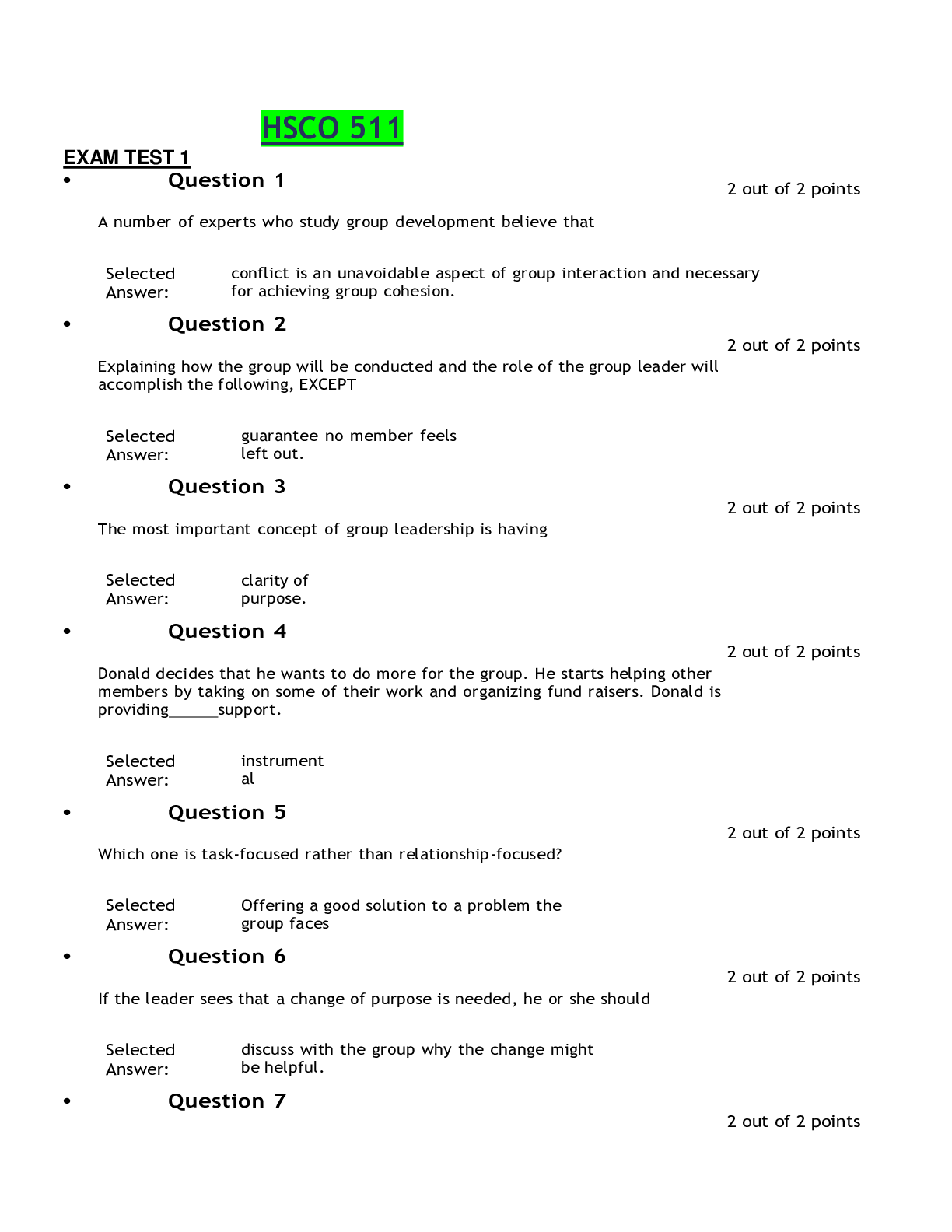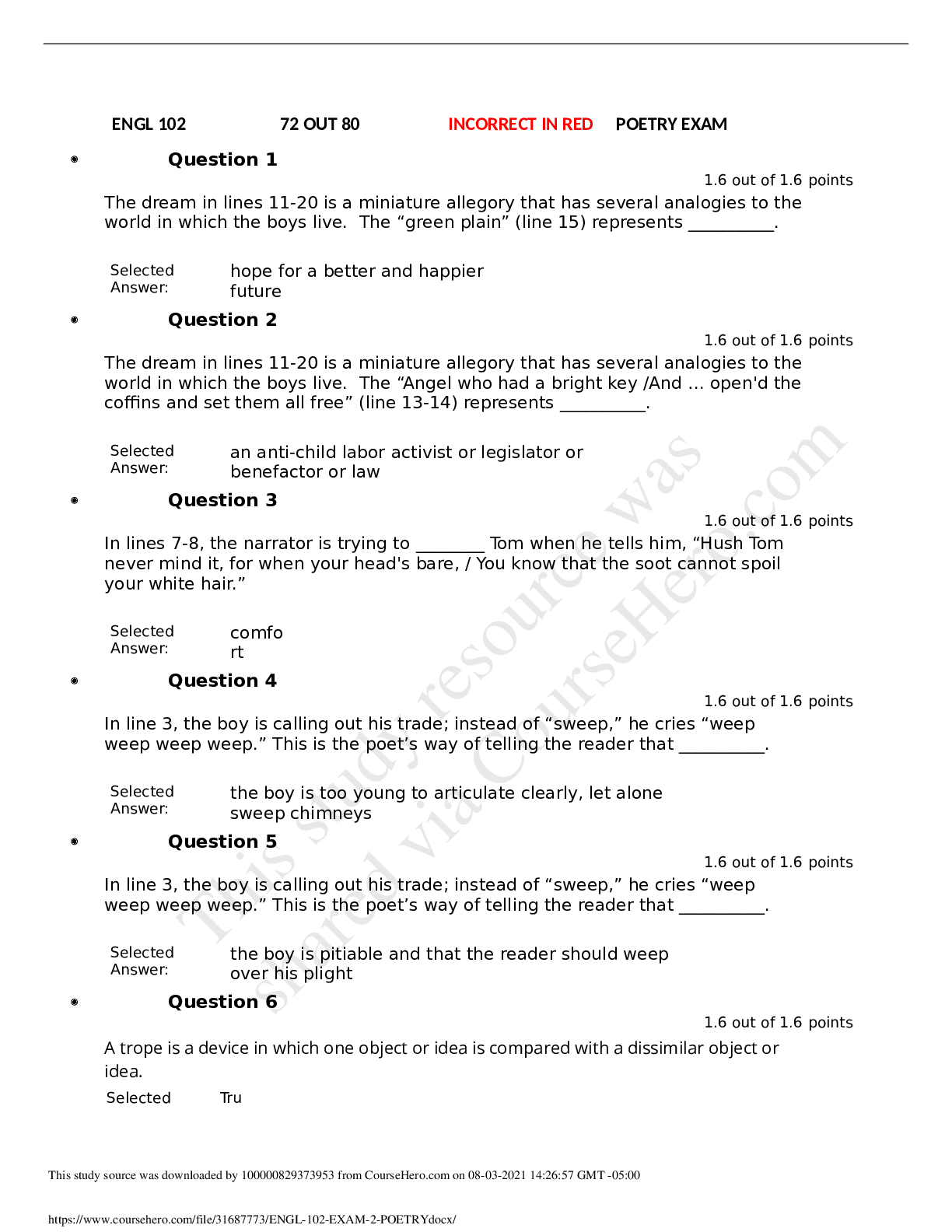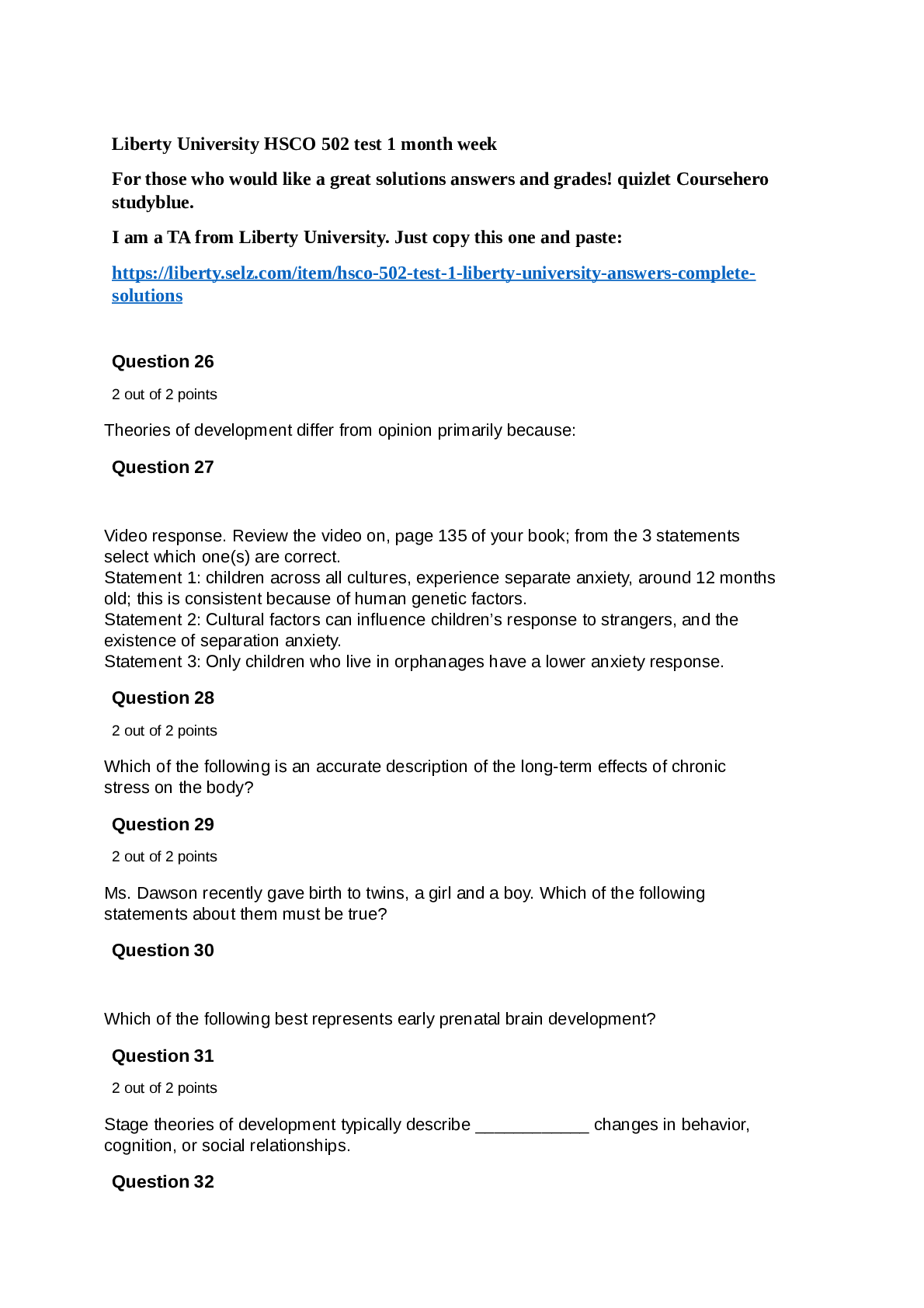History > EXAM > CSTU 101 Quiz 6 Liberty University answers complete solutions 2019/20; Attempt Score 80/80. (All)
CSTU 101 Quiz 6 Liberty University answers complete solutions 2019/20; Attempt Score 80/80.
Document Content and Description Below
CSTU 101 Quiz 6 Liberty University CSTU 101 Quiz 6 • • Question 1 3 out of 3 points Who was the famous practitioner in the medieval time period who challenged Aristotelianism by ... starting with the position that God is the source of truth and that the world is created by God? He merged Christian and Aristotelian thought. • Question 2 3 out of 3 points Consisted a hero of the Renaissance, who wrote Utopia. Lived from 1478-1535. • Question 3 3 out of 3 points Humanists believed in the _______ and dignity of the individual. • Question 4 3 out of 3 points During the 1200’s Popes would employ a military force to combat heresy and use this judicial process to eradicate heresy within the Western culture. • Question 5 3 out of 3 points According to the chart in your Textbook. What are the years of the Renaissance? • Question 6 3 out of 3 points What century was the Washington National Cathedral built in? • Question 7 3 out of 3 points Perhaps the best example of the early Gothic style of architecture is found in which city? • Question 8 3 out of 3 points The Carolingians also stimulated artistic activity. One of these was the development by painters that involved pictures within manuscript pages called _______________. • Question 9 3 out of 3 points A period of Cultural Rebirth in Europe. • Question 10 3 out of 3 points According to the chart in your textbook, which of these types of literature occurs last? • Question 11 3 out of 3 points Which word best describes the culture that gave rise to Romanesque architecture? • Question 12 3 out of 3 points In philosophy, the synthesis of the High Ages was made by_________ in the 13th century, who merged Christian and Aristotelian thought. • Question 13 3 out of 3 points Who halted the Islamic expansion into France and Europe? • Question 14 3 out of 3 points This poem is about a warrior from southern Sweden who sails to his uncle’s court in Denmark where he slays the monster, Grendel. • Question 15 3 out of 3 points Which century was marked by famine and plague in western Europe? • Question 16 3 out of 3 points Michelangelo’s statue standing as a representation of Humanism as it’s proud self. • Question 17 3 out of 3 points One important feature of medieval intellectual life was expanding interest in education, which culminated in a distinctive new institution the ____________ • Question 18 3 out of 3 points What were two classical values that inspired the Renaissance humanists? • Question 19 3 out of 3 points Who gave the Renaissance its first candid picture of human nature with the idealism of medievalism and humanism stripped away. • Question 20 3 out of 3 points Who wrote Don Quizote? • Question 21 2 out of 2 points Charlemagne’s brutal reign destroyed much learning and education in Europe. • Question 22 2 out of 2 points The history of the Crusades illustrates the principle known as the “law of unintended consequences.” • Question 23 2 out of 2 points Science was not very prominent in the medieval intellectual activity. • Question 24 2 out of 2 points Romanesque Architecture developed from the Gothic Architecture. • Question 25 2 out of 2 points Renaissance intellectuals considered themselves to be both humanists and Christians. • Question 26 2 out of 2 points During the period of 750–1000, Carolingian rulers dominated European life. • Question 27 2 out of 2 points The so-called Children’s Crusade was the only crusade that was “successful” in any meaningful sense. • Question 28 2 out of 2 points During the period between 1000–1350, the economy of Europe did not develop much because of little technology being developed. • Question 29 2 out of 2 points Religious architecture was the primary European artistic activity. • Question 30 2 out of 2 points The pope’s actions on Christmas Day 800 made Charles the Great, or Charlemagne (768–814), king of the Franks and emperor of the Carolingian Empire (from Charles’s Latin name, Carolus) [Show More]
Last updated: 1 year ago
Preview 1 out of 4 pages
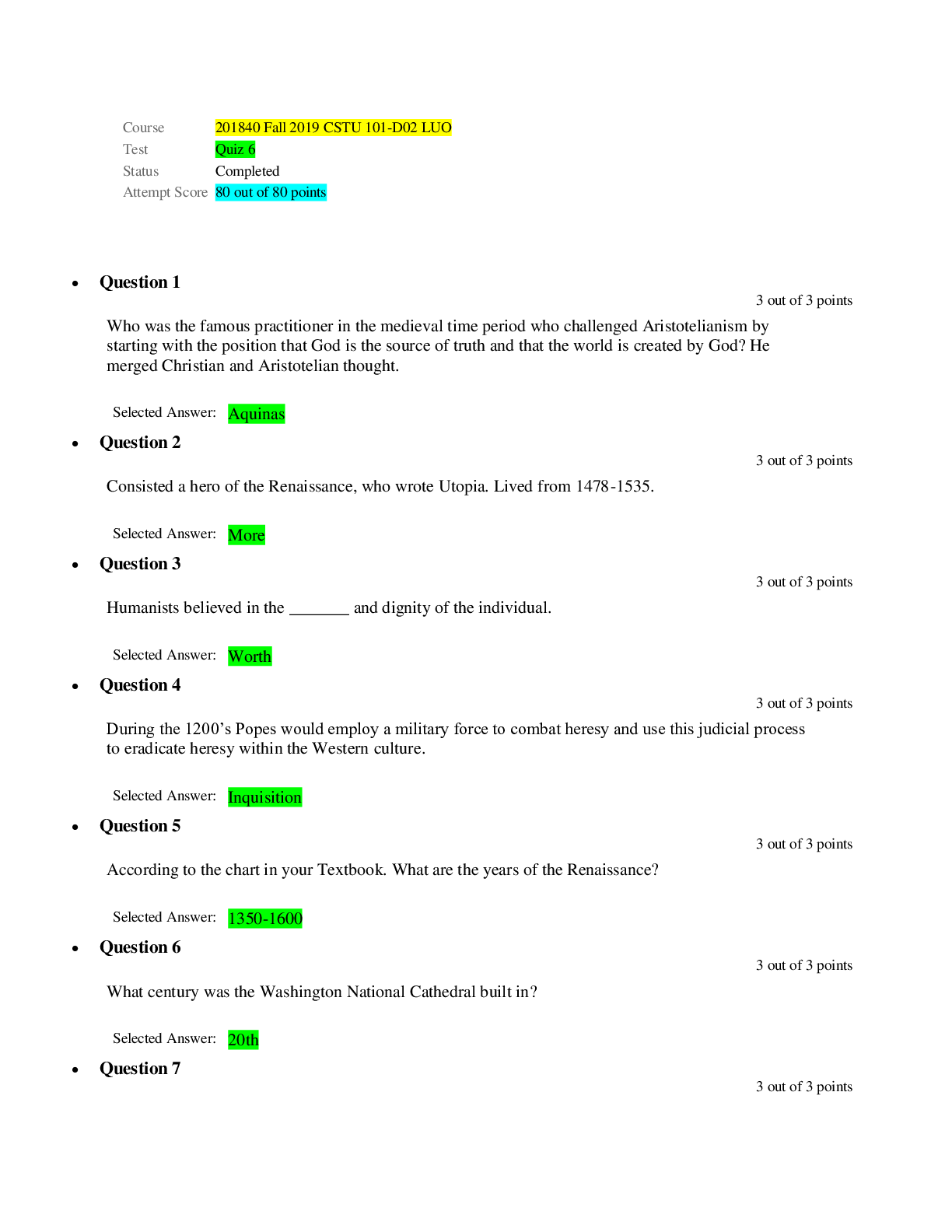
Reviews( 0 )
Document information
Connected school, study & course
About the document
Uploaded On
Nov 20, 2019
Number of pages
4
Written in
Additional information
This document has been written for:
Uploaded
Nov 20, 2019
Downloads
0
Views
134

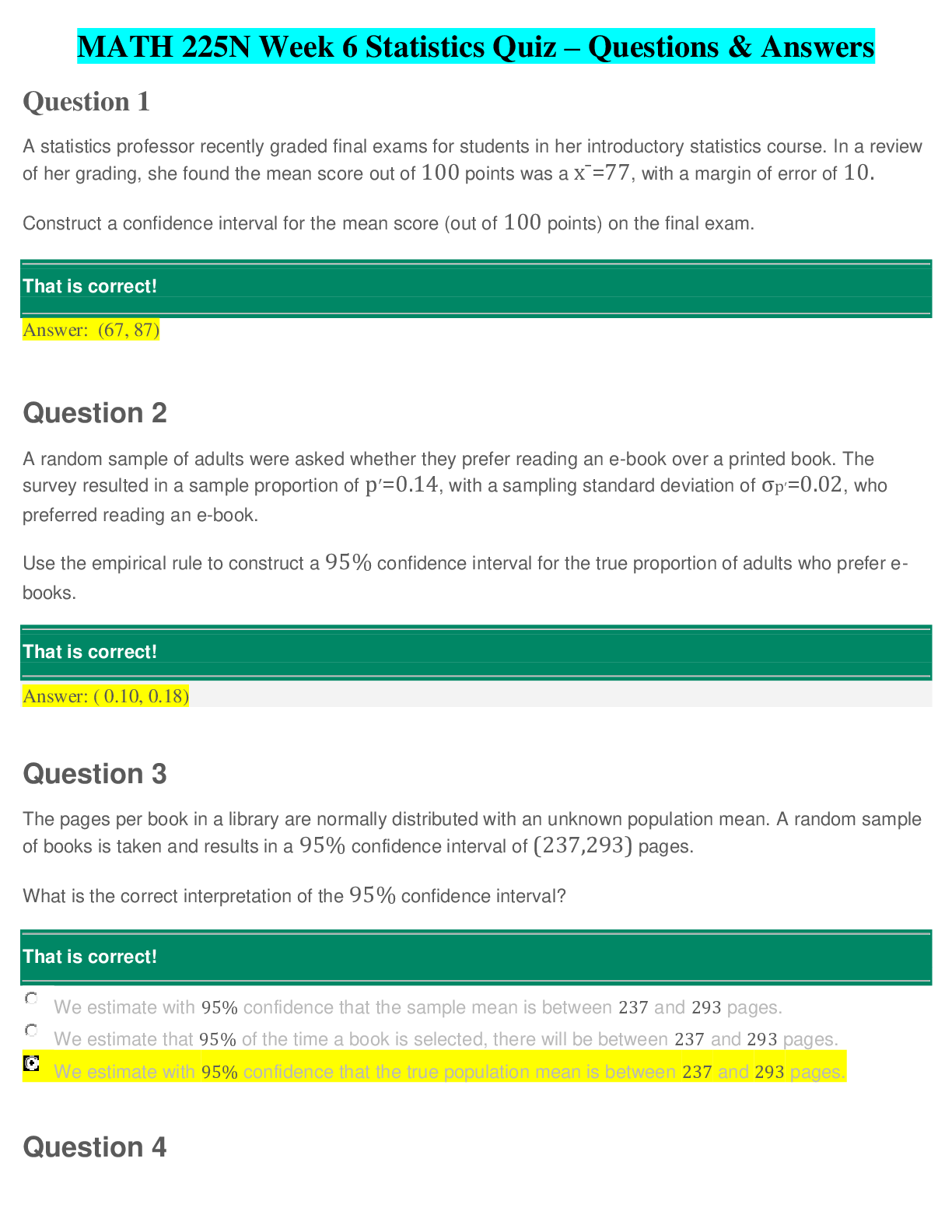
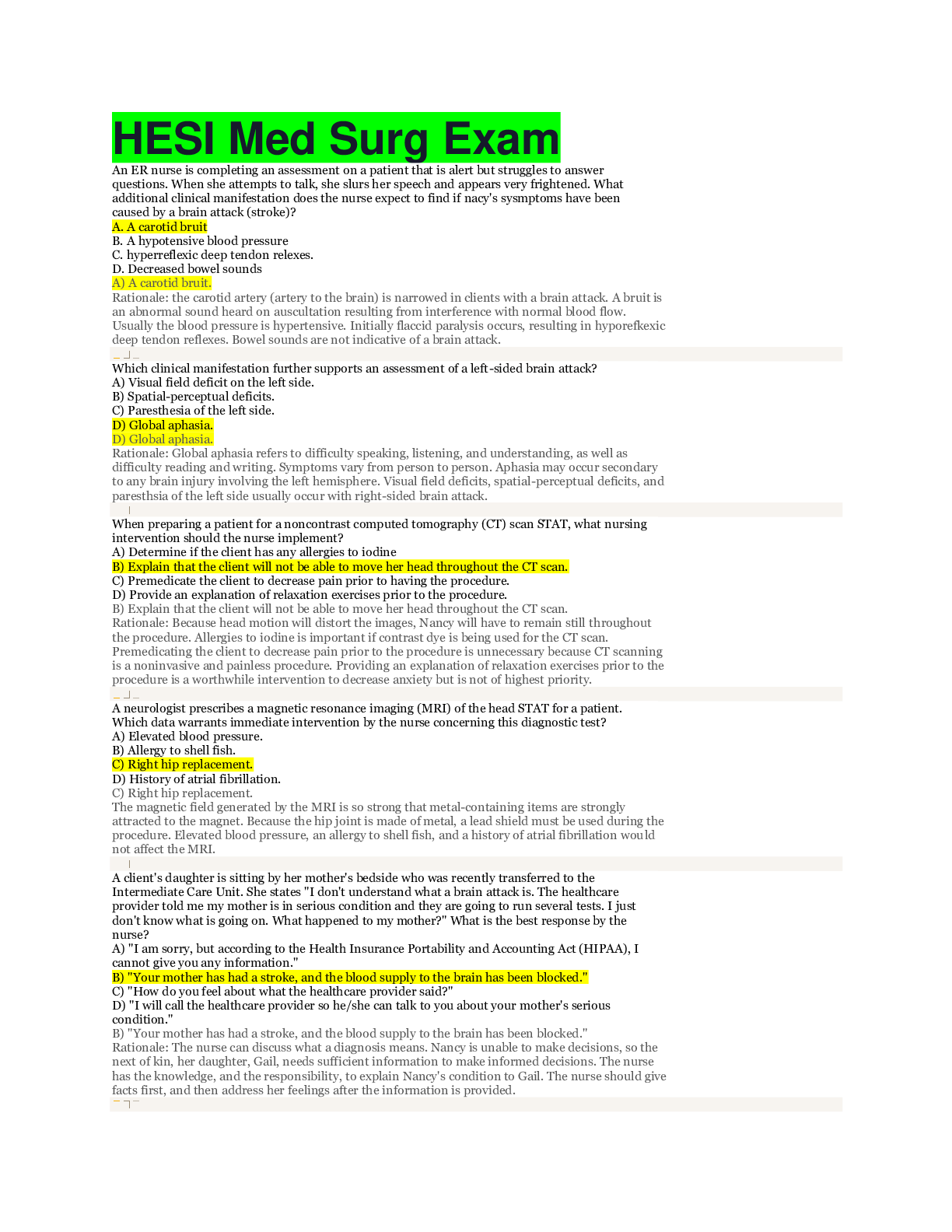
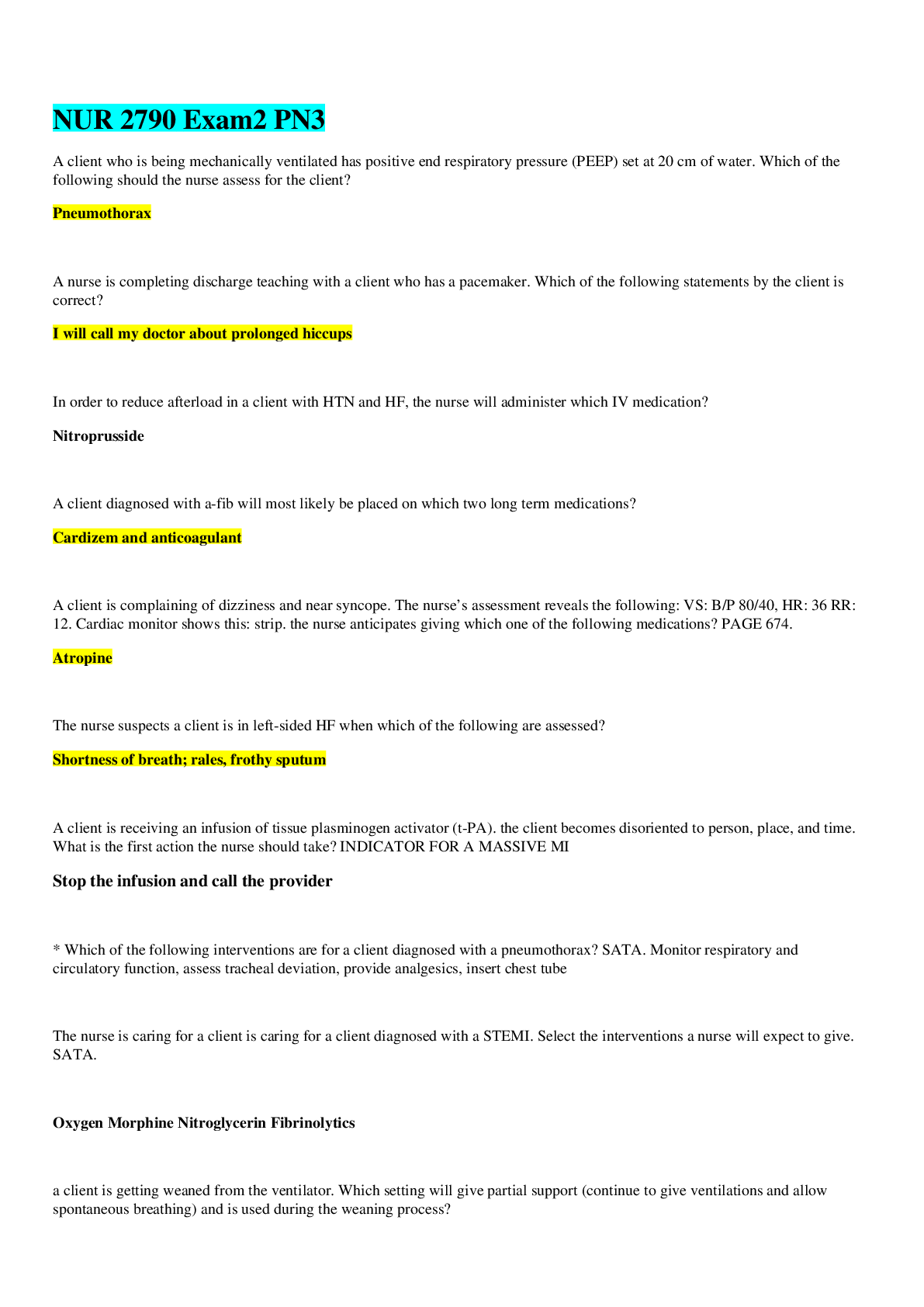
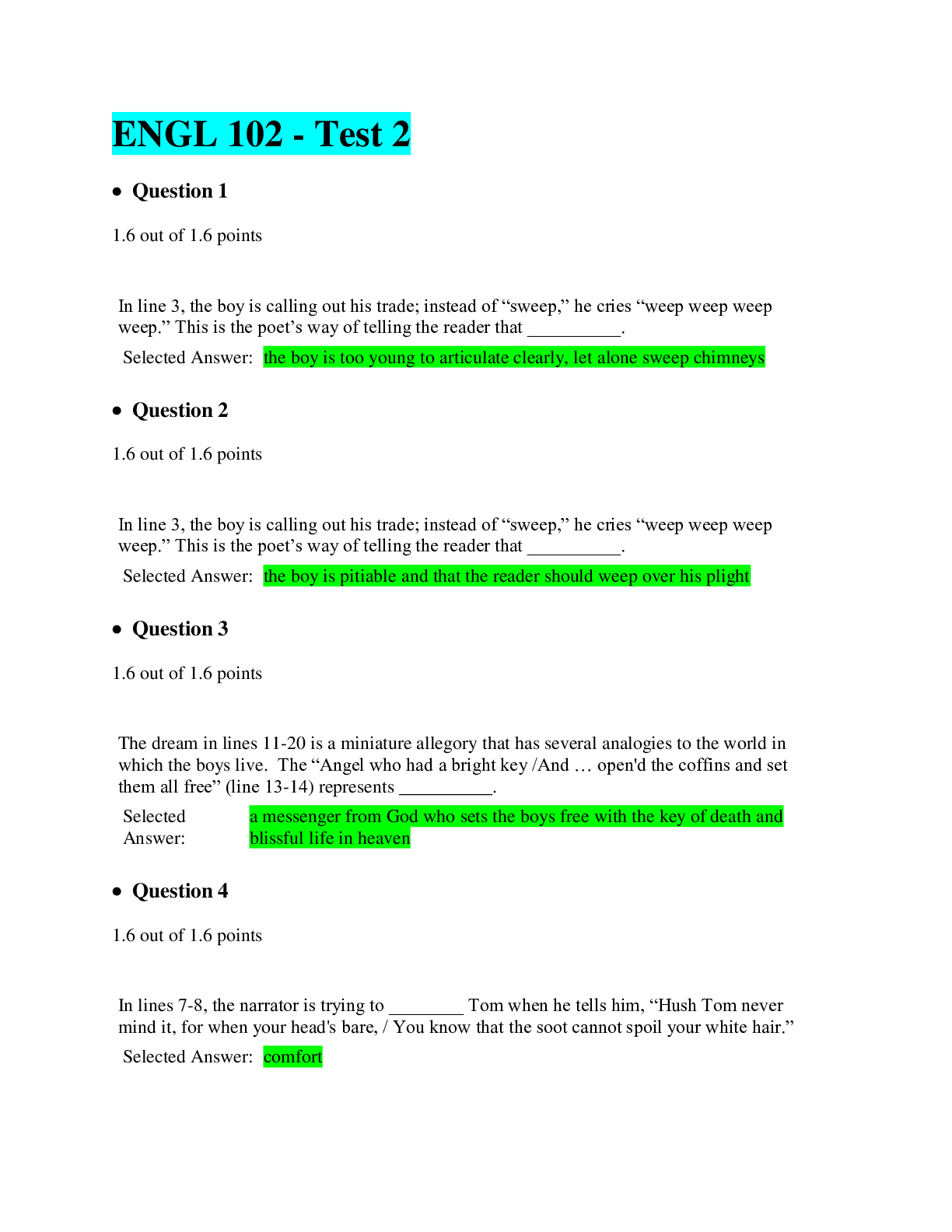
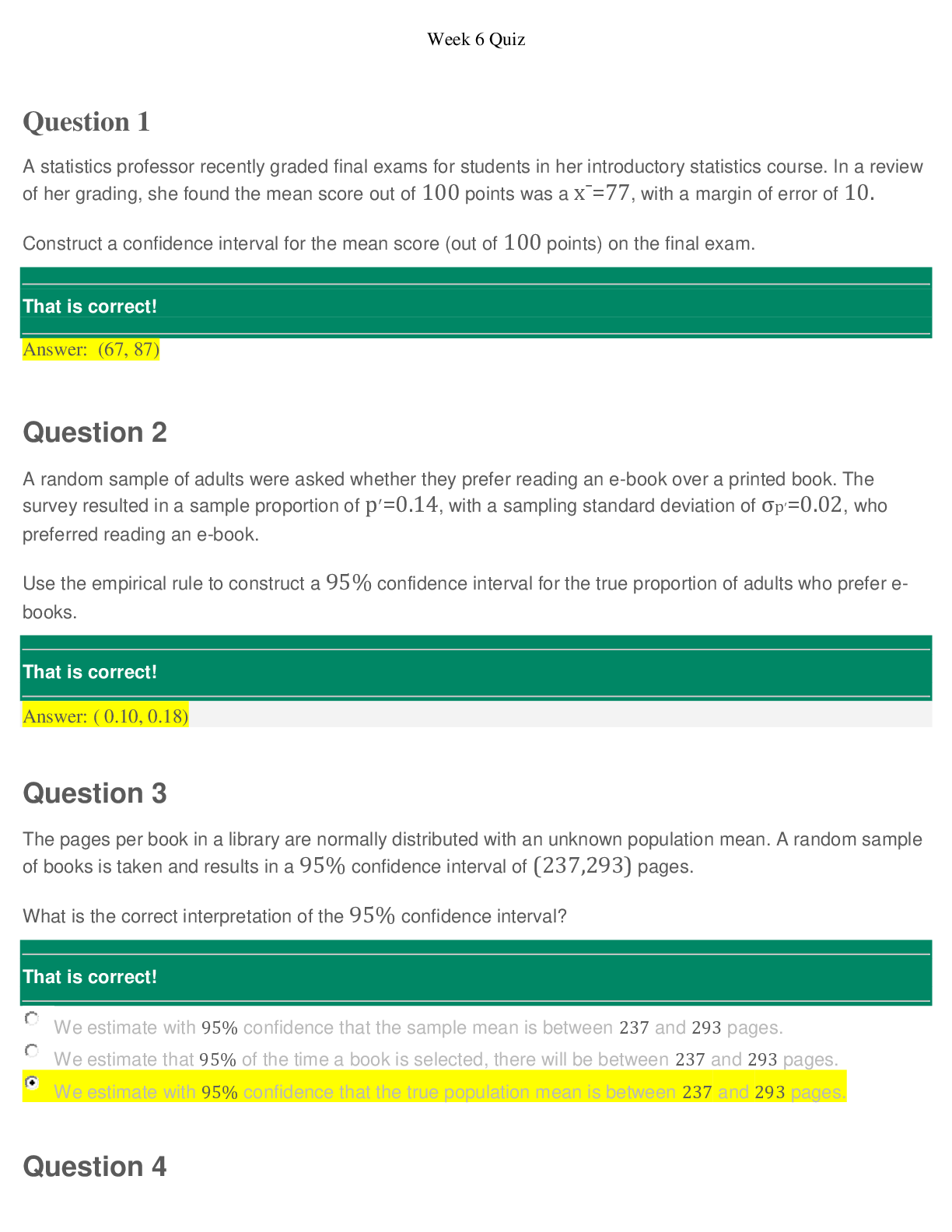

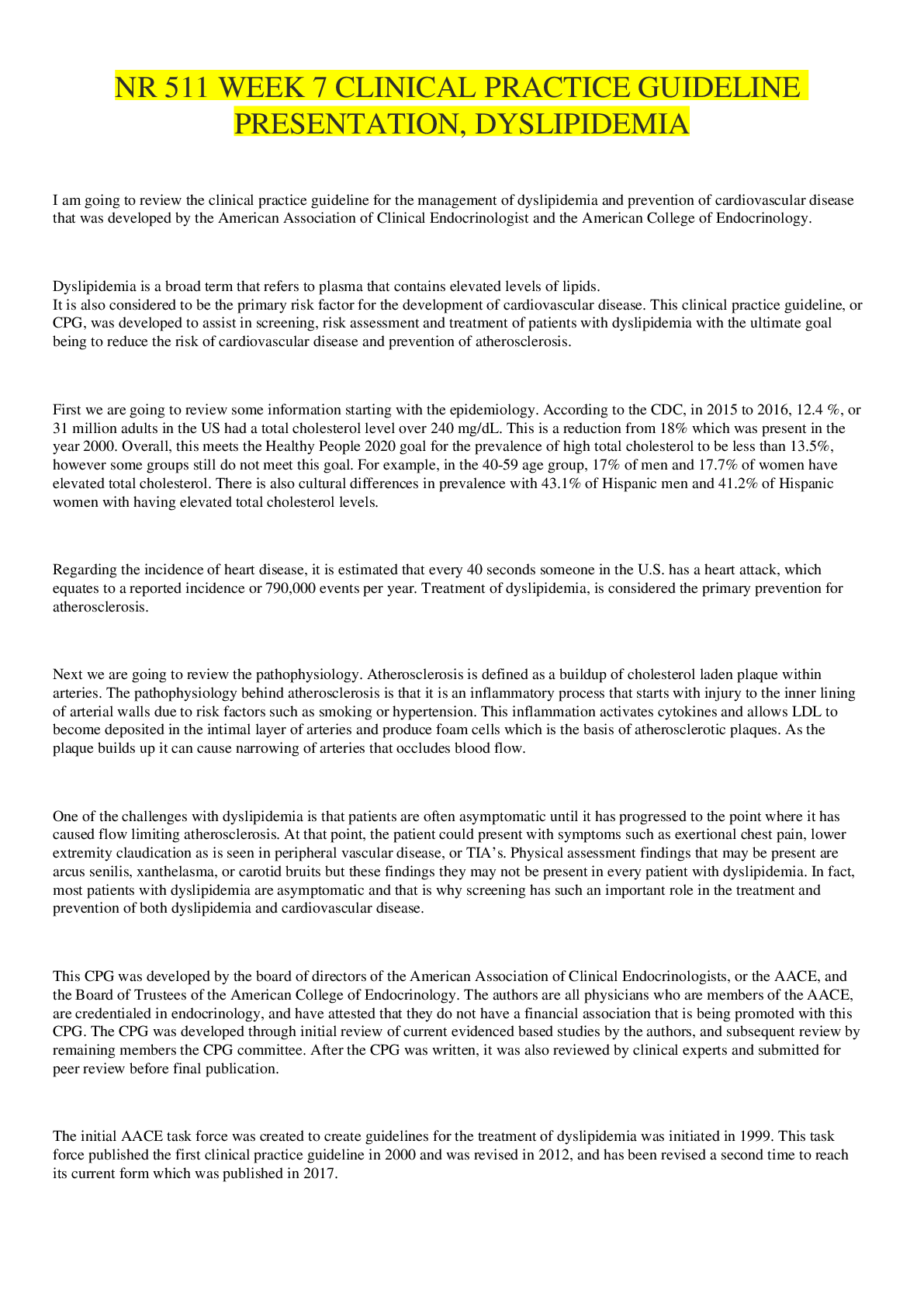
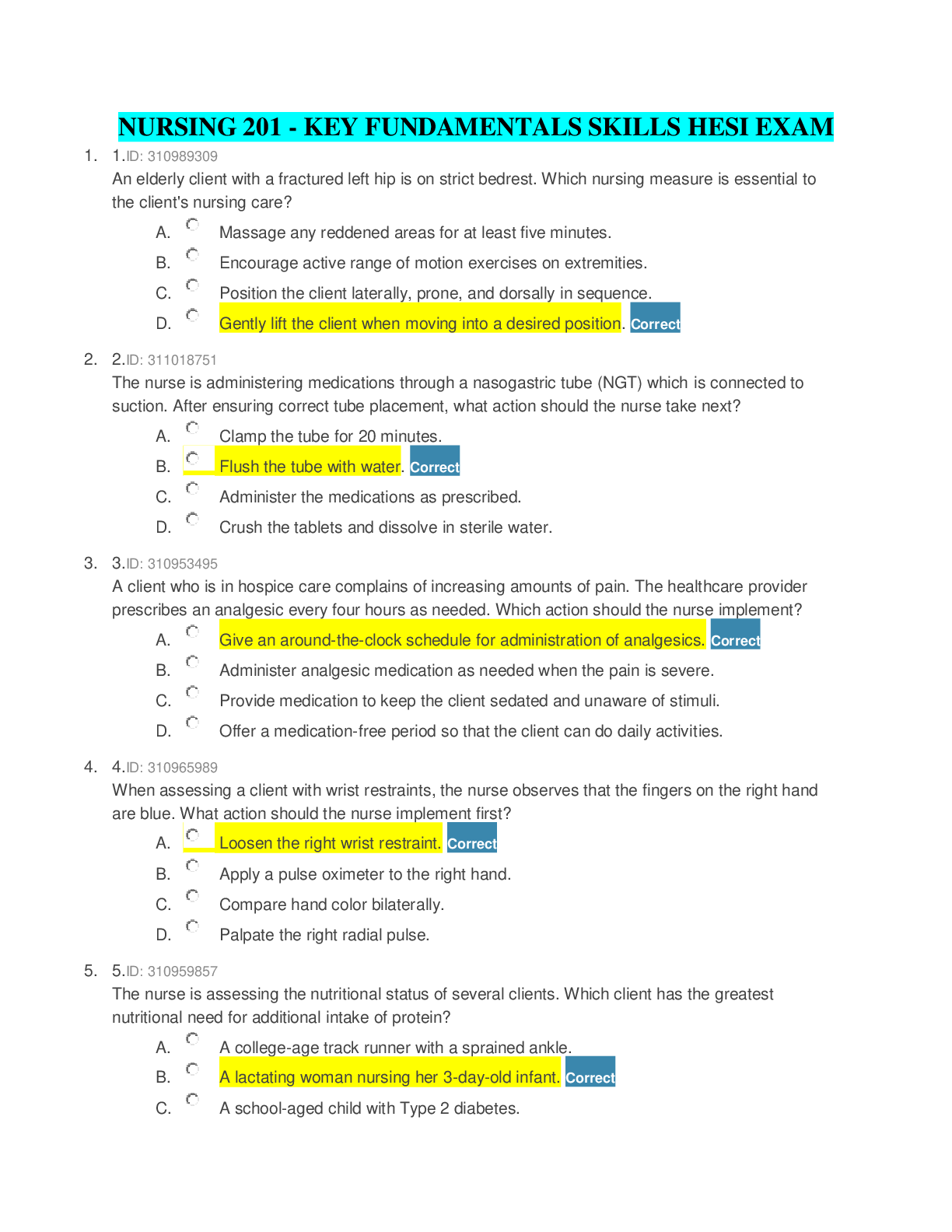
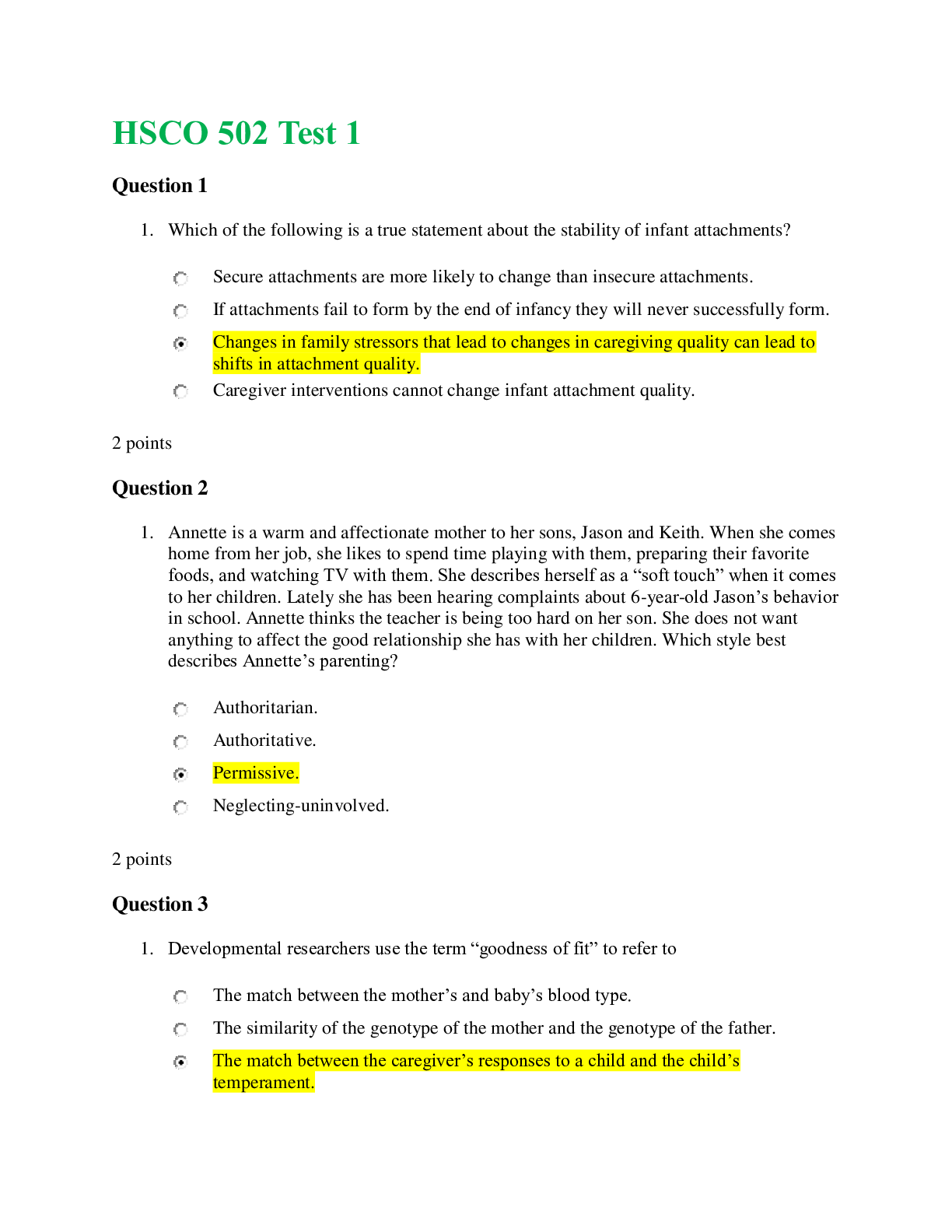

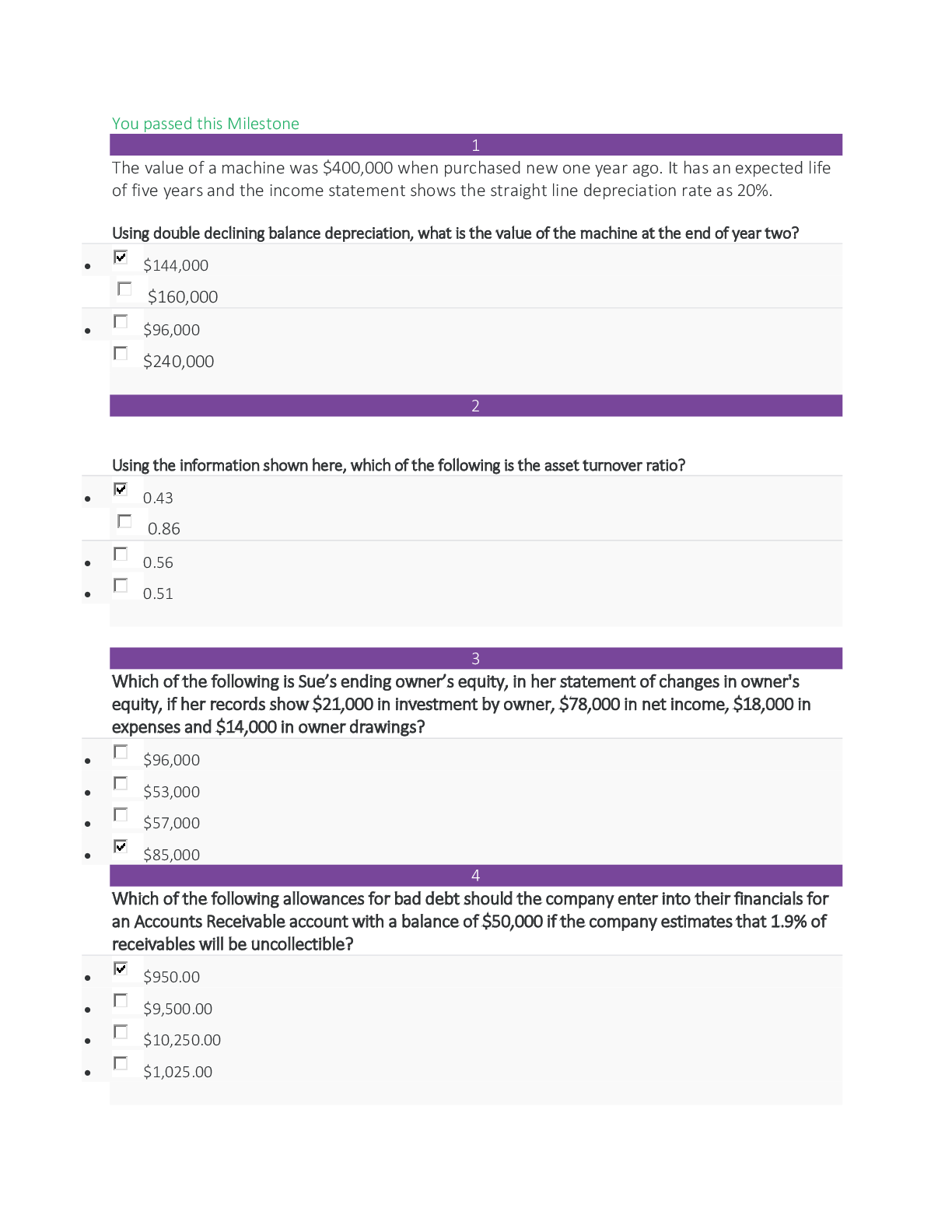
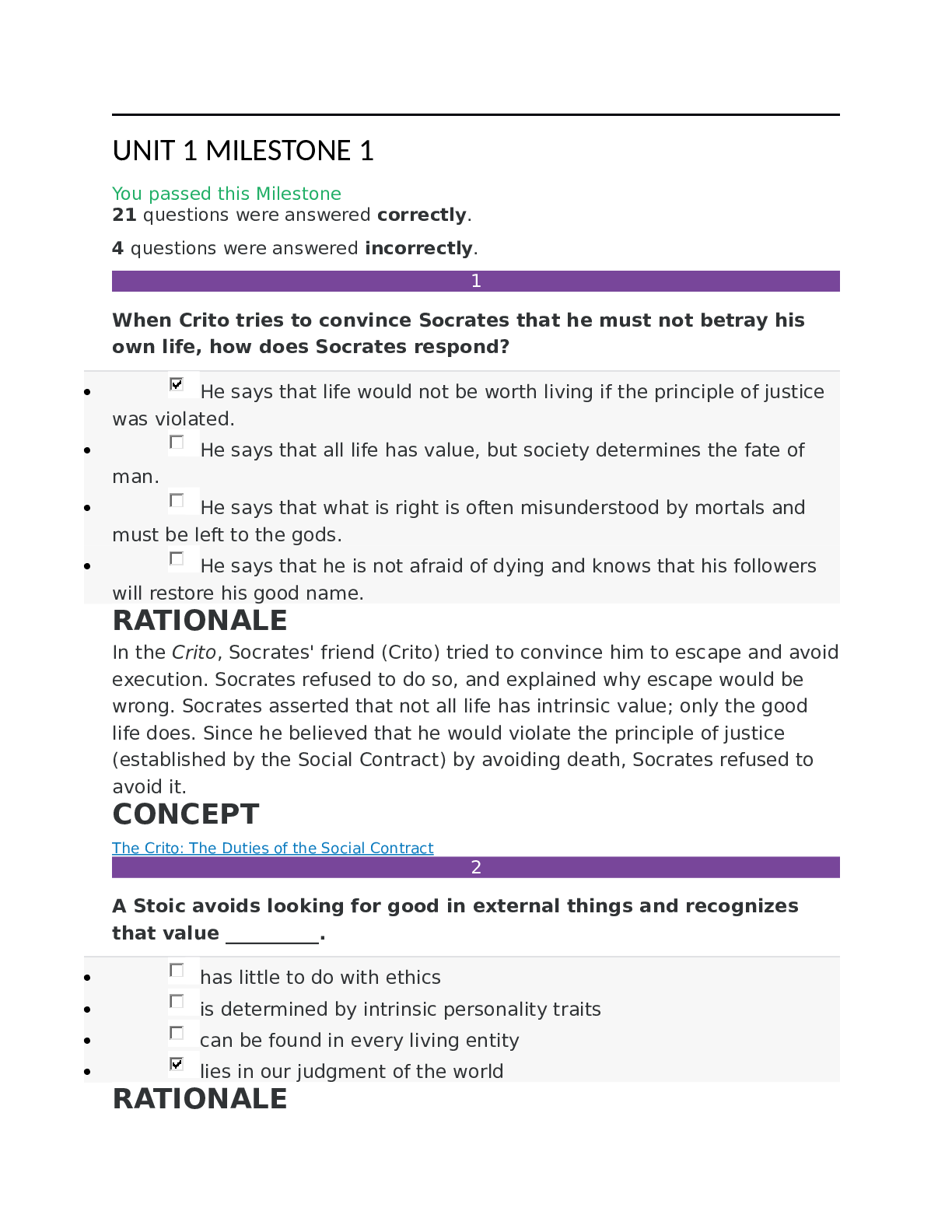
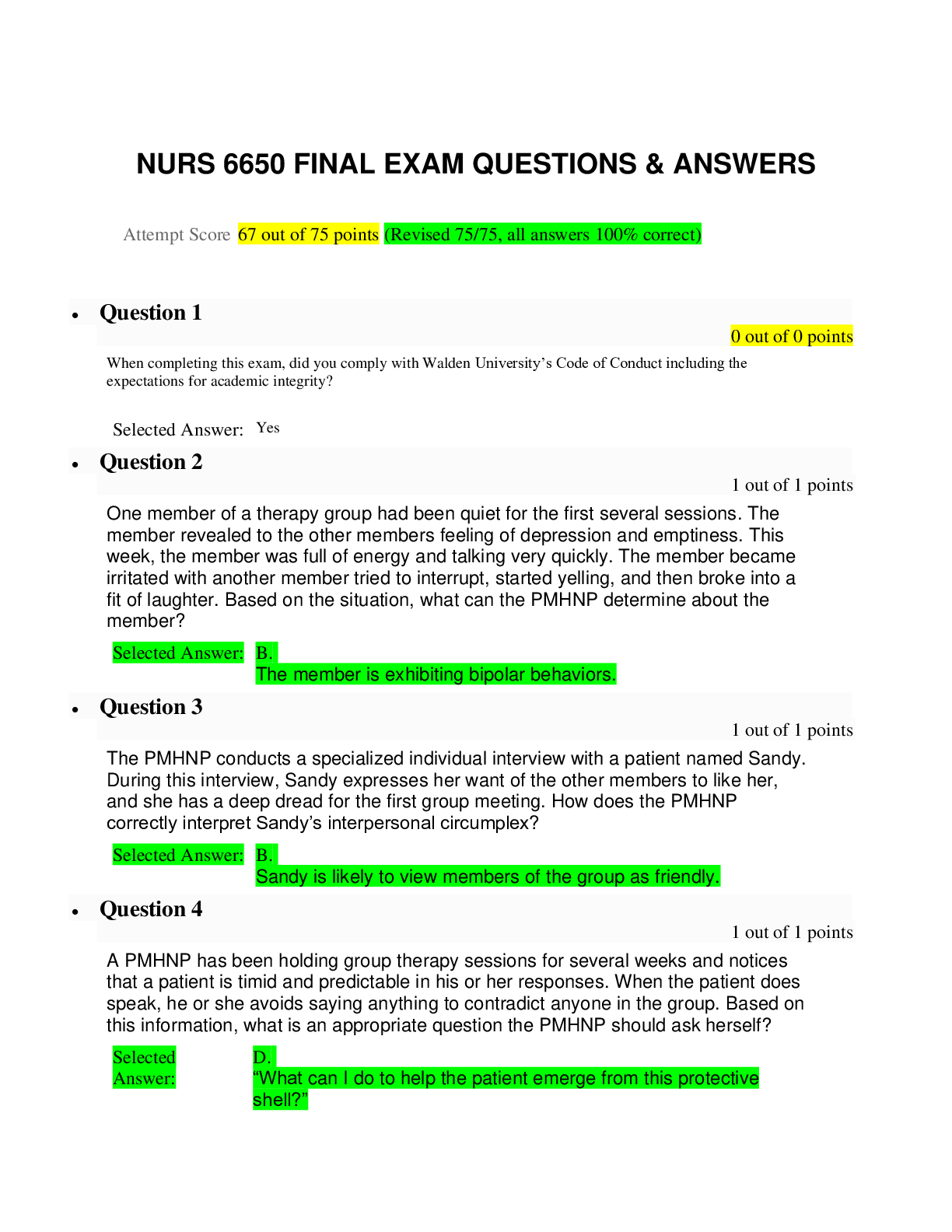
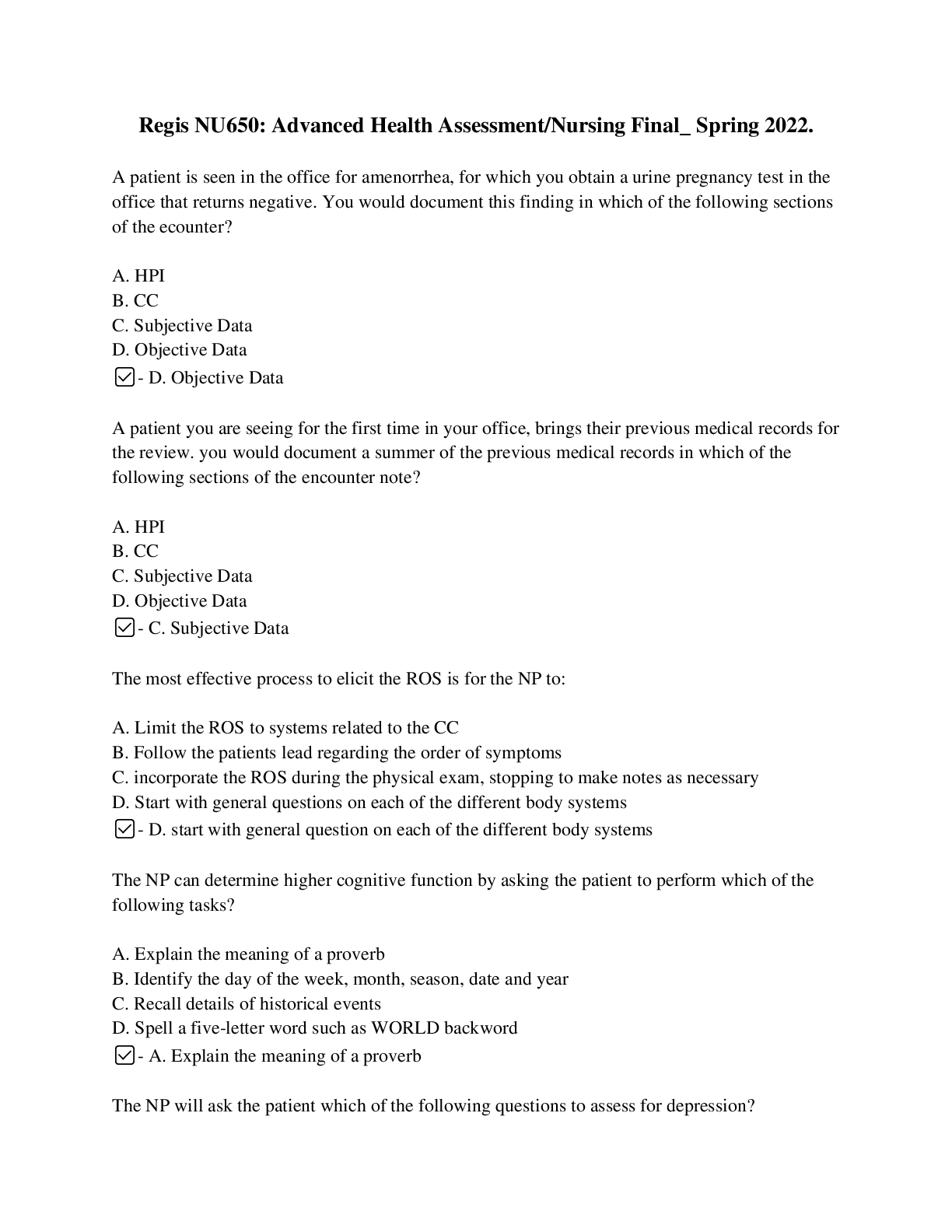
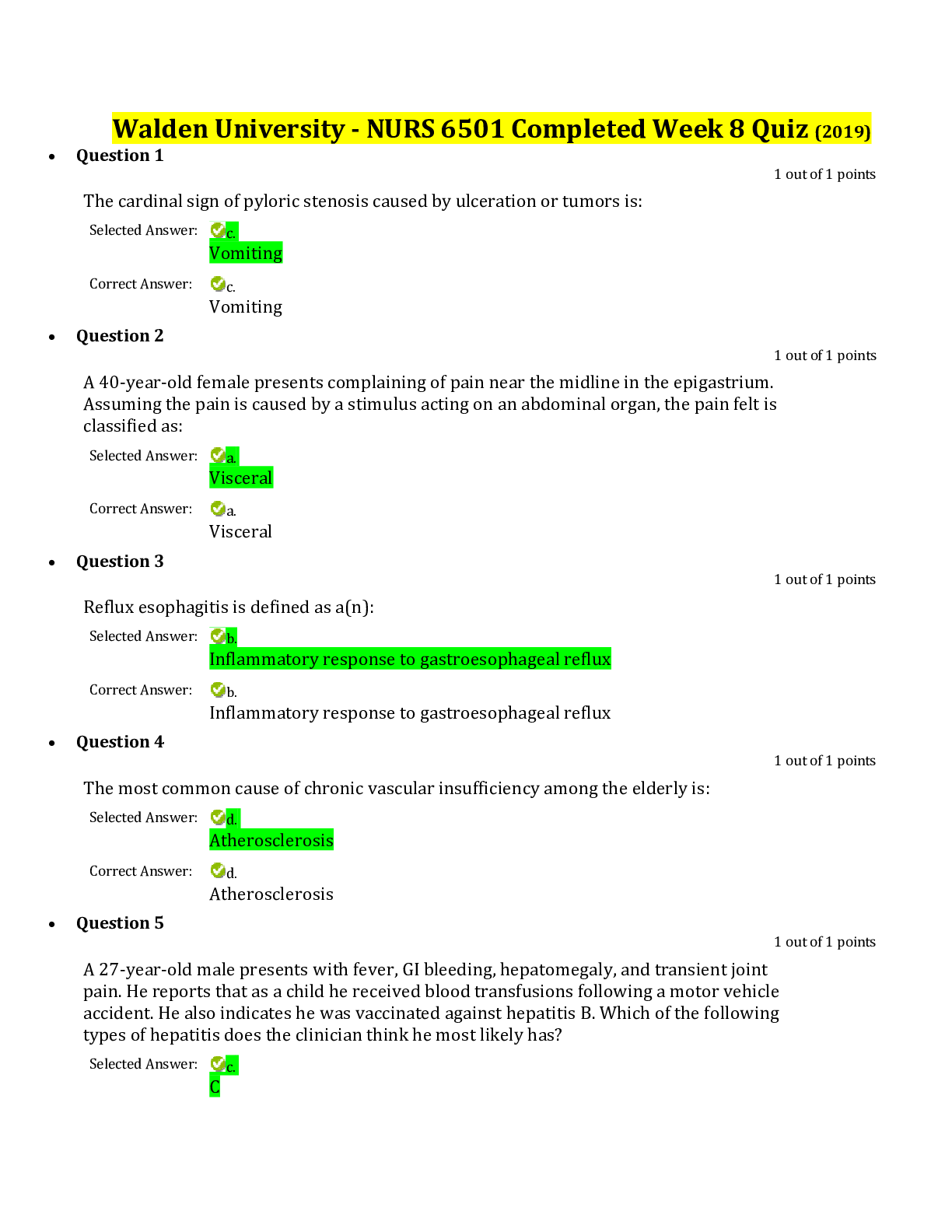
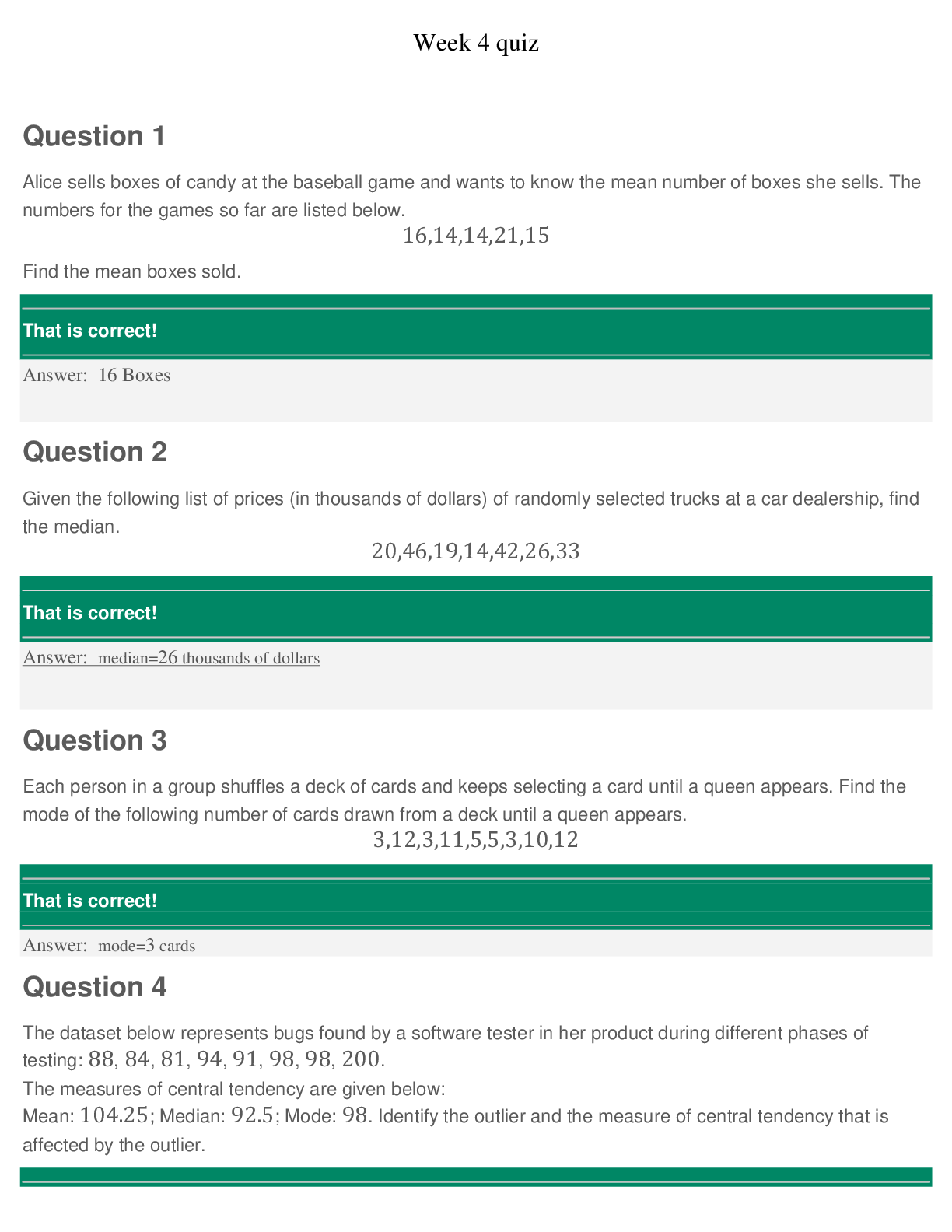
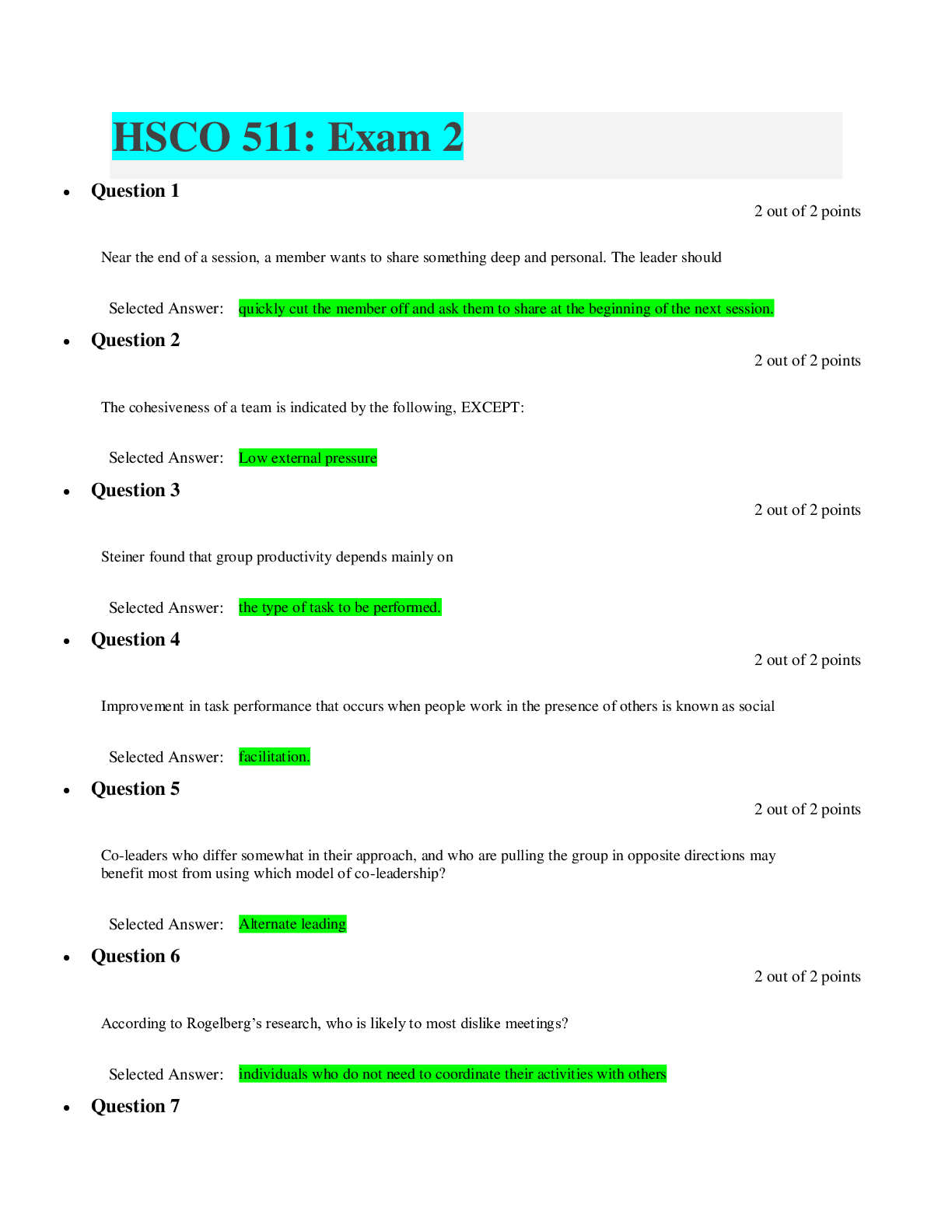

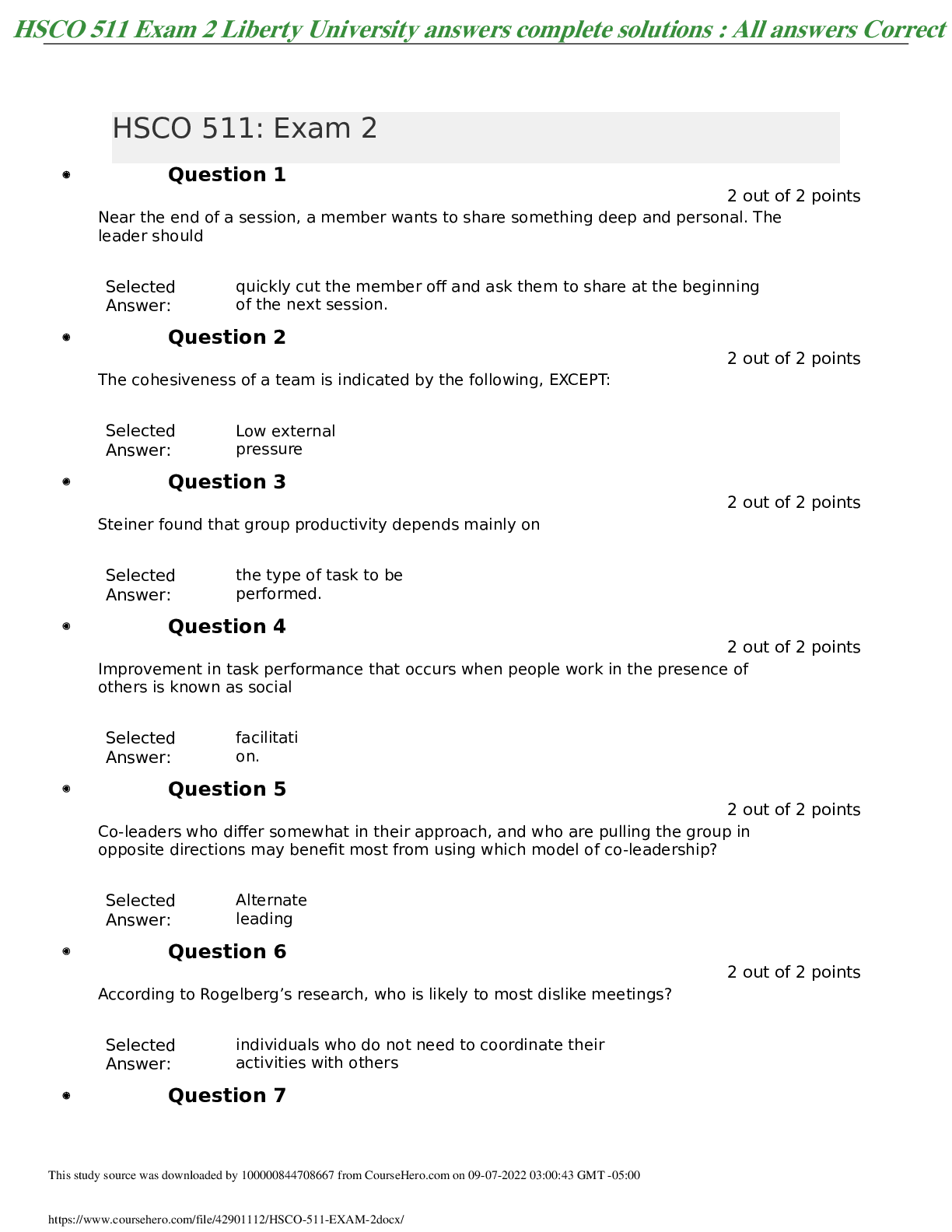
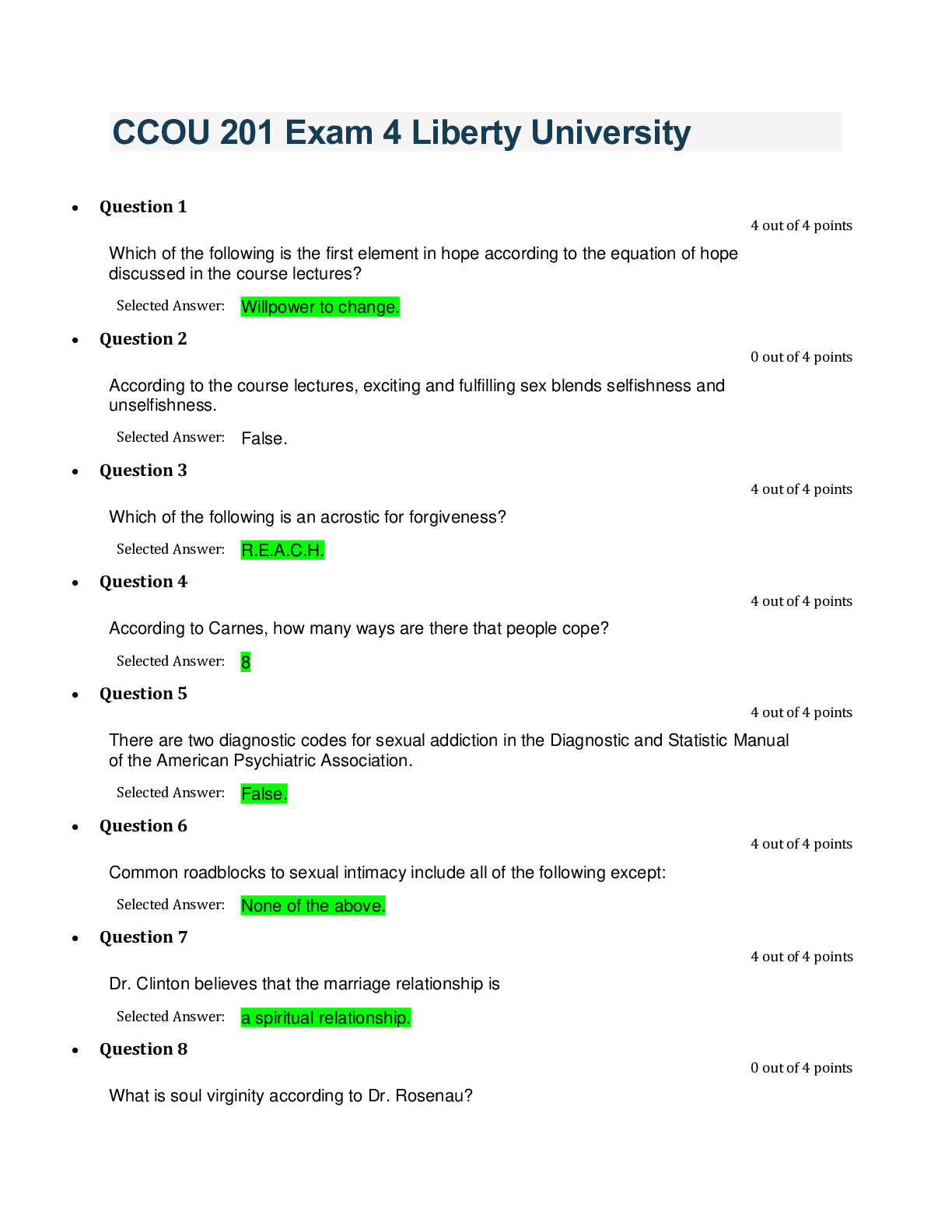
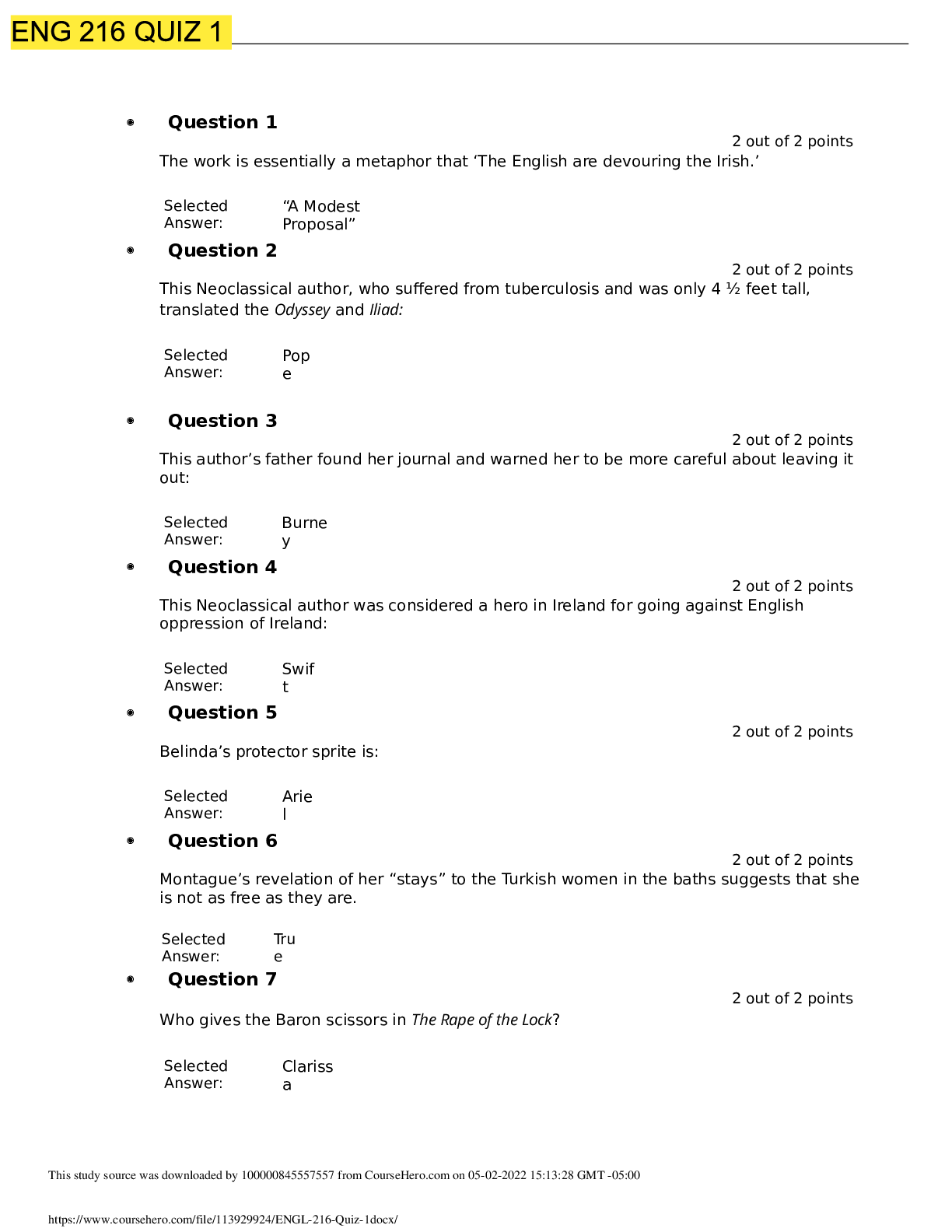
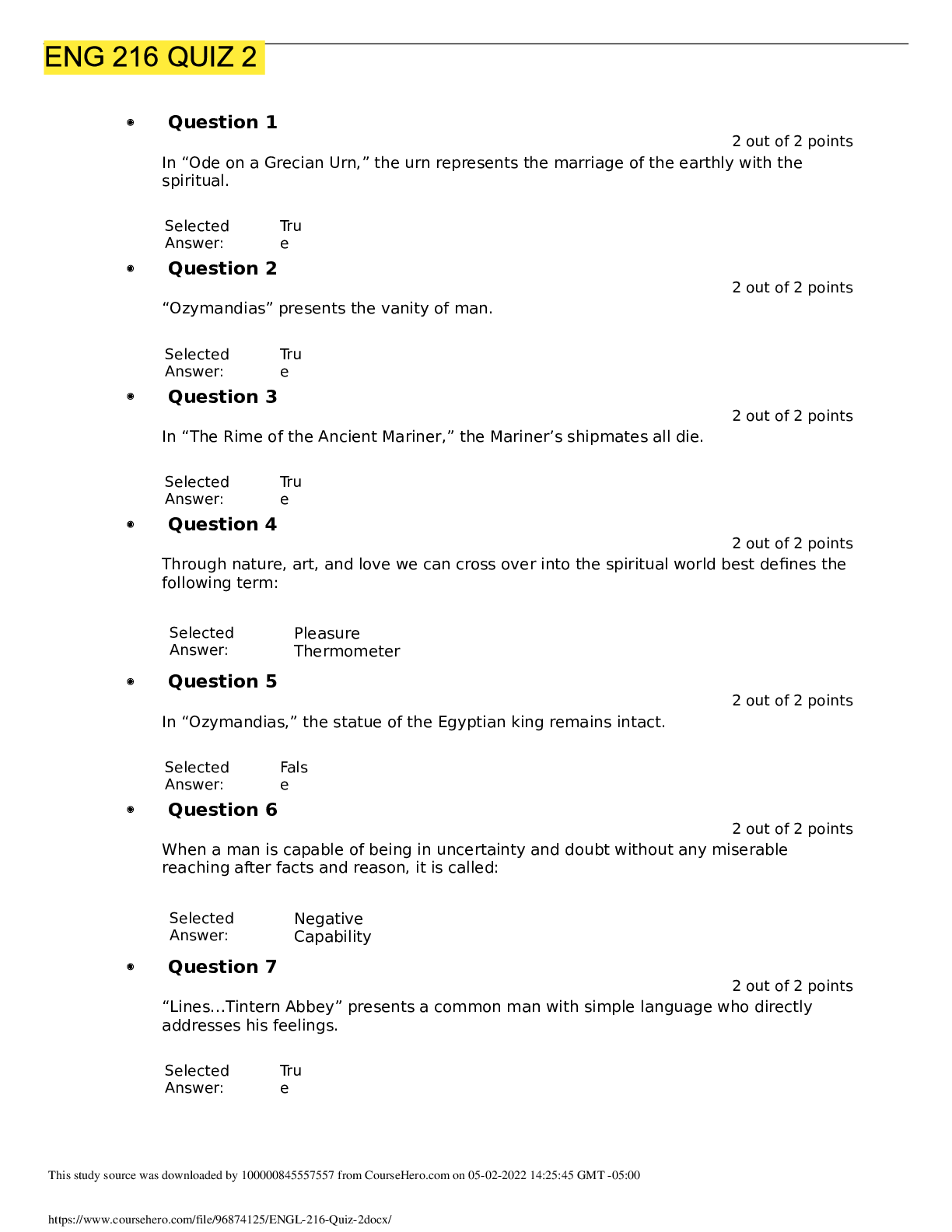
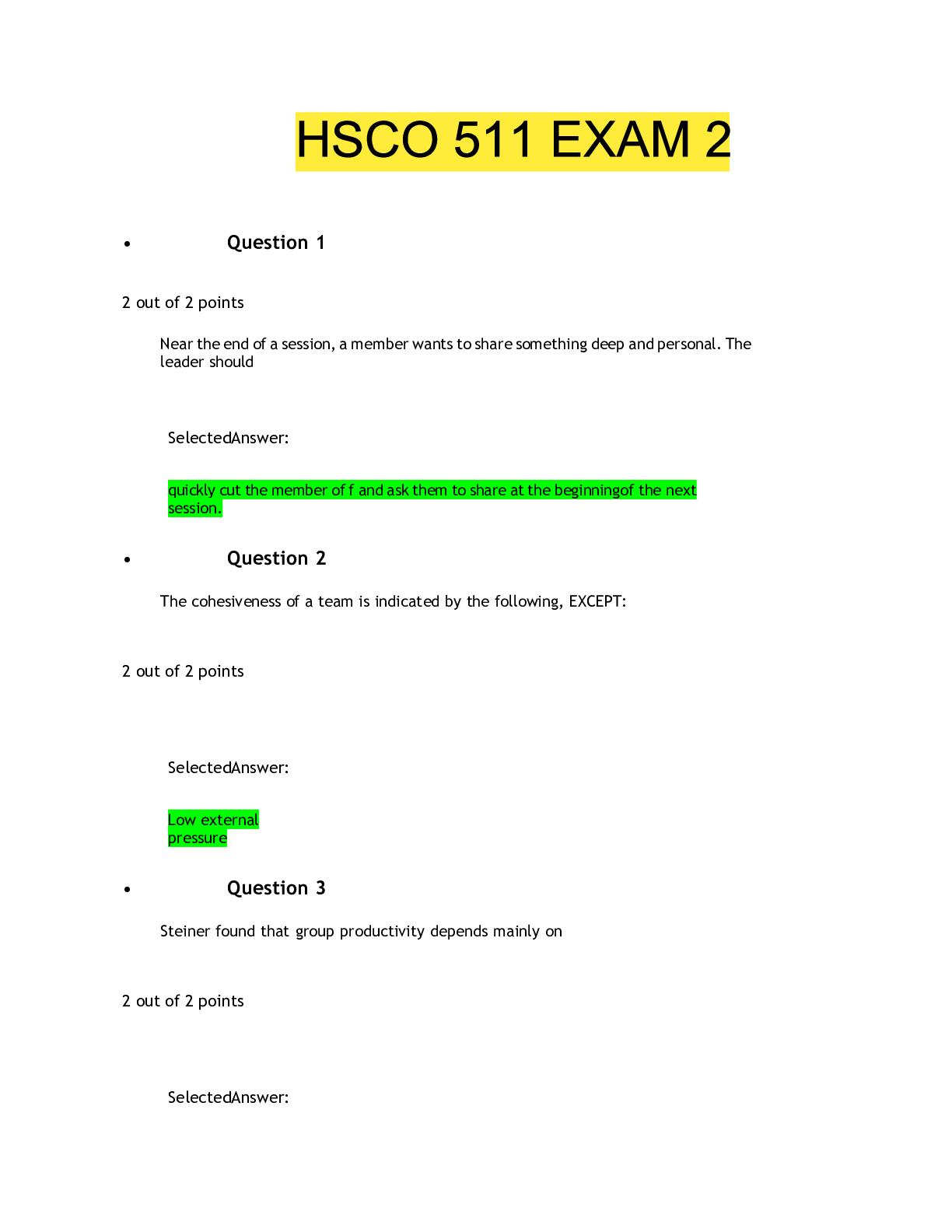
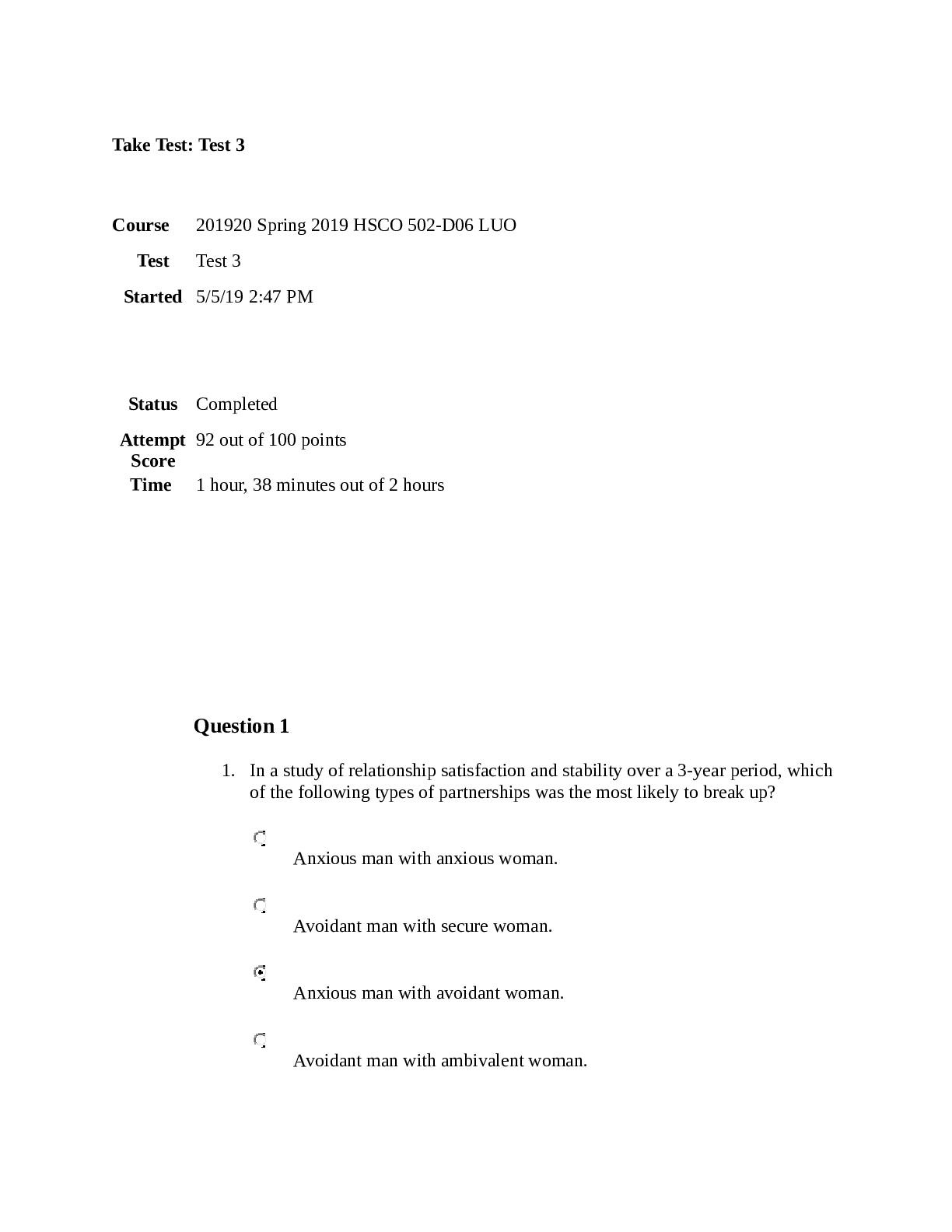
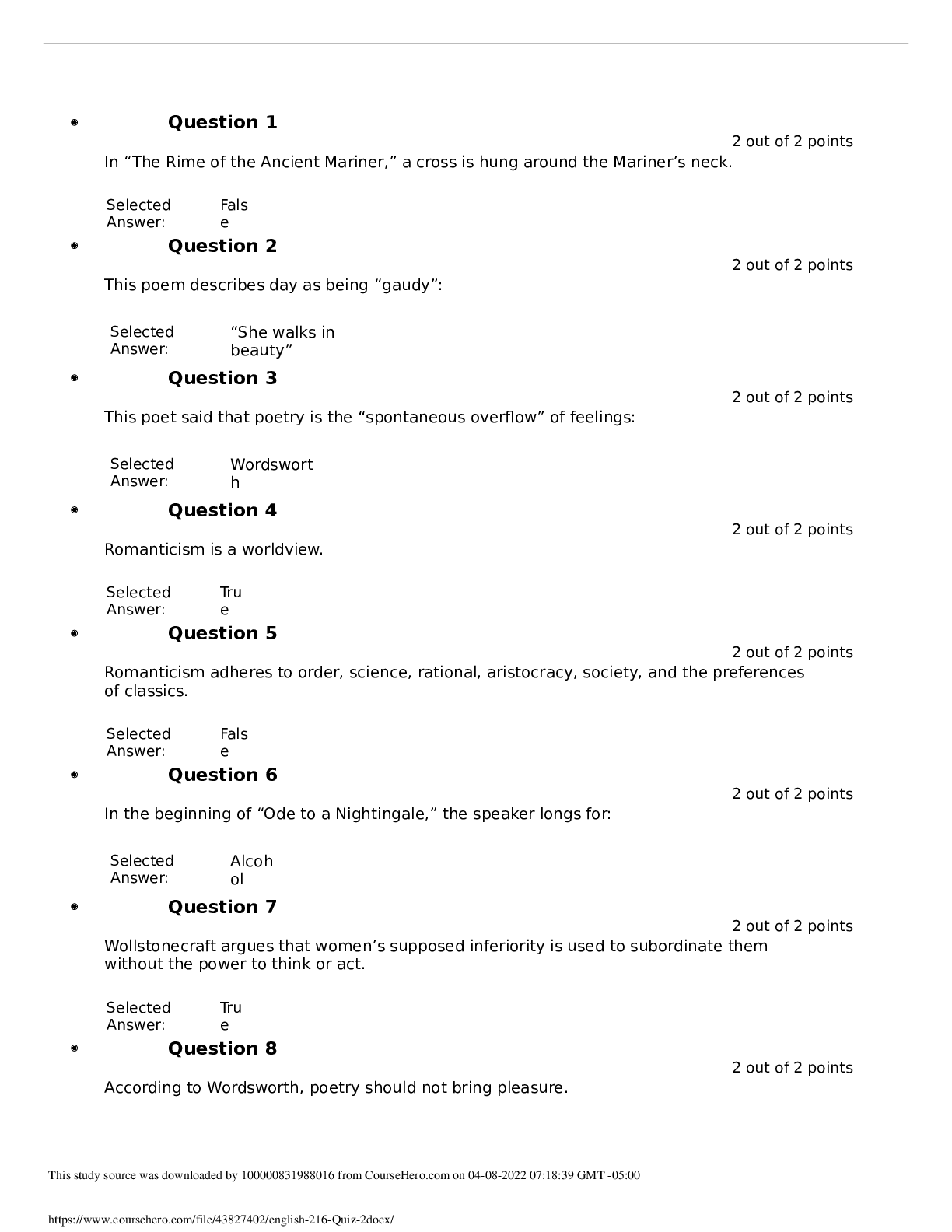
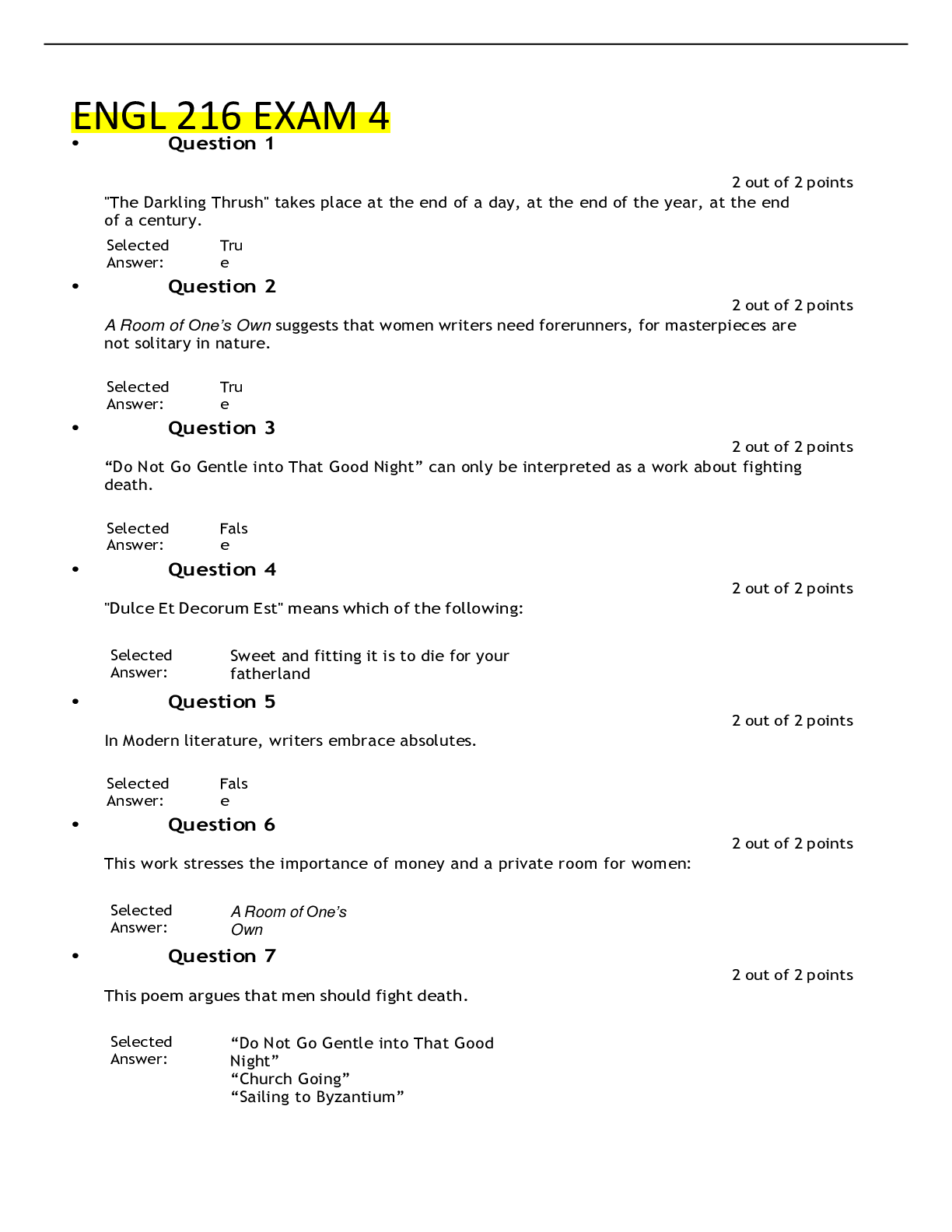
.png)

